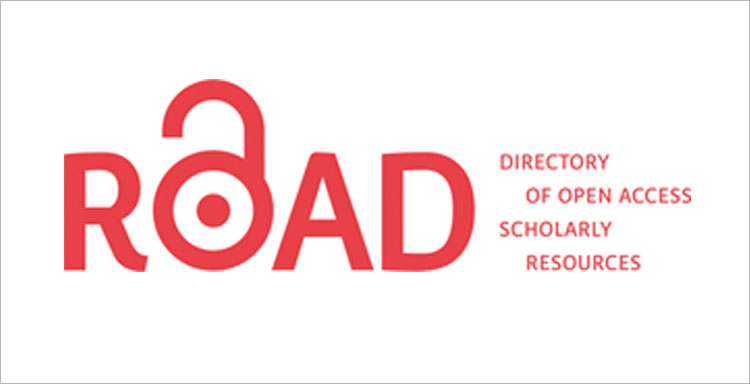Reforzando la educación con inteligencia artificial: Implementación de un chatbot como compañero educativo en el instituto Amazónico
DOI:
https://doi.org/10.56124/sapientiae.v7i15.007Keywords:
Inteligencia Artificial, Lenguaje de Procesamiento Natural, Andragogía Tecnológica.Abstract
The integration of Artificial Intelligence (AI) in the educational field has become a vanguard for pedagogical and andragogical innovation, offering tools that personalize and enrich the learning experience. This project focuses on the development and implementation of a chatbot based on Natural Language Processing (NLP) at the Instituto Superior Tecnológico Amazónico of the Yantzaza canton, province of Zamora Chinchipe, designed to act as an educational companion for students and teachers. The goal is to provide instant access to relevant personalized information about the career to which students and teachers belong, details about curricula, study guides, institutional events, and more, all through a conversational and intuitive interface. In addition to facilitating the obtaining of academic and logistical information, the chatbot is designed to support the teaching and learning process in innovative ways. This includes personalized academic guidance, where the chatbot can suggest learning resources based on a student's specific difficulties or interests. It also incorporates functionalities for language practice and explanations of complex concepts, thus promoting greater organization and efficiency in studying. This approach not only seeks to improve access to educational information and resources, but also to foster a more connected and supported learning community, where students feel guided throughout their educational journey. The implementation of this chatbot represents a cutting-edge technological improvement, where technology and andragogy intertwine to create more enriching learning experiences.
Downloads
References
Llambí, C. (2023). Transformación digital en la educación: Oportunidades, desafíos y claves para avanzar. CAF. https://www.caf.com/es/conocimiento/visiones/2023/08/transformacion-digital-en-la-educacion-oportunidades-desafios-y-claves-para-avanzar/
Botpress. (2022). An introduction to AI chatbots. https://botpress.com/es/blog/an-introduction-to-ai-chatbots
UNESCO. (n.d.). La inteligencia artificial en la educación. https://www.unesco.org/es/digital-education/artificial-intelligence
Ortega, C. (2022). Inteligencia artificial en la educación: Impacto y ejemplos. QuestionPro.
https://www.questionpro.com/blog/es/inteligencia-artificial-en-la-educacion/
Kamalov, F., Santandreu Calonge, D., & Gurrib, I. (2023). New Era of Artificial Intelligence in Education: Towards a Sustainable Multifaceted Revolution. Sustainability, 15(16), 12451. https://doi.org/10.3390/su151612451
Carvalho, LL. (2024). Chatbot en la educación: ¿cuáles son los beneficios para tu institución?. https://www.sydle.com/es/blog/chatbot-en-la-educacion- cuales-son-los-beneficios-634d4f67491b8e20c4b01486
Morduchowicz, A. (2023). ChatGPT y educación: ¿oportunidad, amenaza o desafío?. https://blogs.iadb.org/educacion/es/chatgpt-educacion/
Morron, M. (n.d). Chat GPT y el futuro de la educación. https://blog.linclearning.com/es/chat-gpt-y-el-futuro-de-la-educacion
Brown, T., Mann, B., Ryder, N., Subbiah, M., Kaplan, J. D., Dhariwal, P., Neelakantan, A., Shyam, P., Sastry, G., Askell, A., ... Neelakantan, A. (2020). Language models are few- shot learners. Advances in Neural Information Processing Systems, 33, 1877–1901.
Mancuzo, G. (2020). Programación Extrema: Pros y Contras. https://blog.comparasoftware.com/programacion-extrema-ventajas-desventajas/
Cetina, V. (2022). ¿Cuáles son las ventajas de Angular como framework front-end?. Devoteam.
https://mx.devoteam.com/expert-view/cuales-son-las-ventajas-de-angular-como-framework-front- end/#:~:text=Angular%20le%20permite%20comunicarse%20con,sean%20reutilizabl es%20y%20m%C3%A1s%20aislados.
Roque, L. (2023). Leveraging Llama 2 Features in Real-world Applications: Building Scalable Chatbots with FastAPI, Celery, Redis, and Docker. Towards Data Science. https://towardsdatascience.com/leveraging-llama-2-features-in-real- world-applications-building-scalable-chatbots-with-fastapi-406f1cbeb935
Raeburn, A. (2024). La programación extrema (XP) produce resultados, pero ¿es la metodología adecuada para ti?. https://asana.com/es/resources/extreme-programming-xp
Munar, P. (2023). ¿Qué son los grandes modelos de lenguaje o LLM (Large Language Models)? https://www.cyberclick.es/numerical-blog/que-son-los- grandes-modelos-de-lenguaje-o-llm-large-language-models
Amazon Web Services. (n.d.). What is a large language model? https://aws.amazon.com/es/what-is/large-language-model/

Published
How to Cite
Issue
Section
License
Copyright (c) 2024 Revista Científica Multidisciplinaria SAPIENTIAE. ISSN: 2600-6030.

This work is licensed under a Creative Commons Attribution-NonCommercial-ShareAlike 4.0 International License.

2.jpg)


















